Guibourtia coleosperma
(Copalwood) Bastermopanie [Afrikaans]; /gwi [San]
Life
> eukaryotes >
Archaeoplastida >
Chloroplastida
>
Charophyta > Streptophytina > Plantae (land plants)
> Tracheophyta (vascular plants) > Euphyllophyta > Lignophyta (woody plants)
> Spermatophyta (seed plants) > Angiospermae (flowering
plants) > Eudicotyledons > Core Eudicots > Rosids >
Eurosid I > Fabales > Family: Fabaceae > Subfamily: Caesalpinioideae
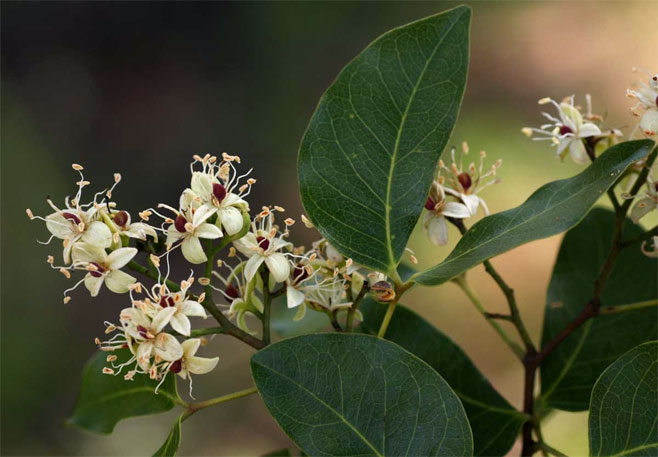 |
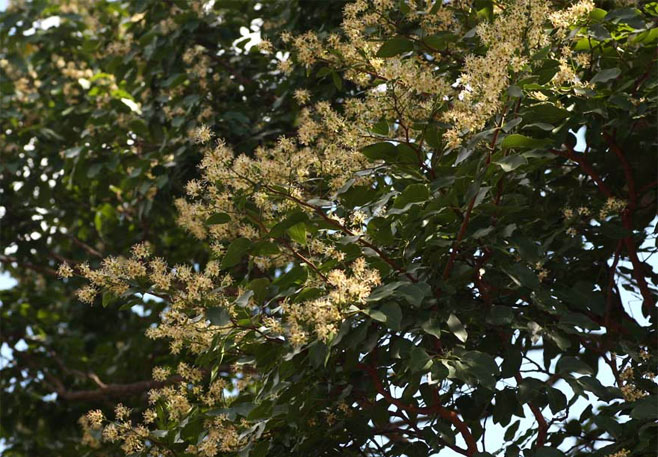 |
|
Guibourtia coleosperma, Bembesi Forest
Land, by main road from Hwange to Bulawayo, Zimbabwe. [photo Bart
Wursten ©, Flora of Zimbabwe] |
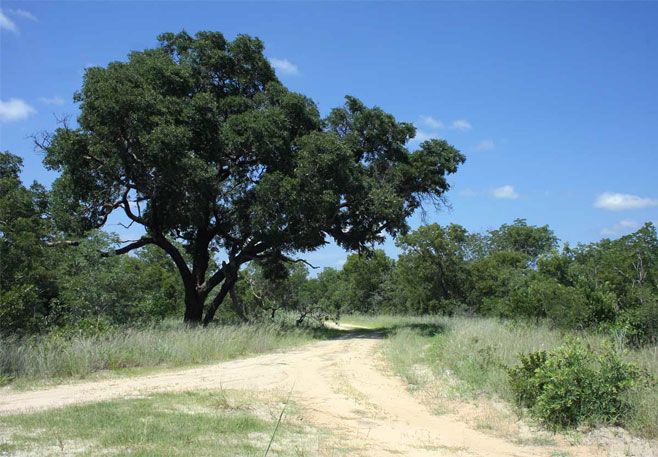 |
|
Guibourtia coleosperma, Hwange National
Park, on loop from Main Camp through Dopi Pan, Zimbabwe. [photo Bart
Wursten ©, Flora of Zimbabwe] |
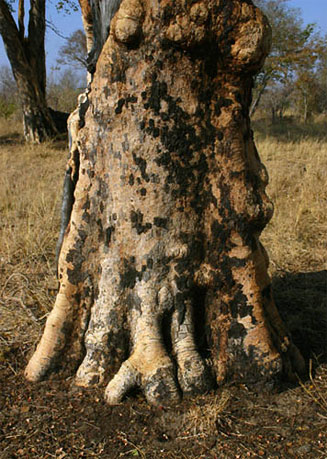 |
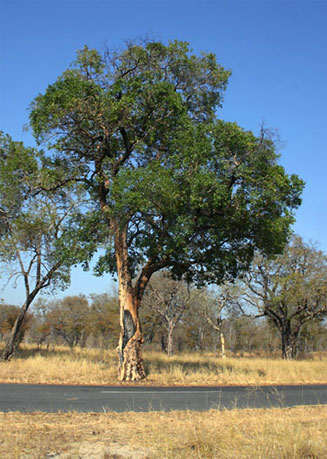 |
|
Guibourtia coleosperma, entrance road to
Hwange Main Camp, Zimbabwe. [photos Bart Wursten ©, Flora of Zimbabwe] |
A tree that occurs in the Kalahari sands of northern
Namibia and northern Botswana. Each seed is covered in a bright red aril.
The !Khu Bushmen of NE Namibia remove the seed coat and eat the seed raw,
roasted or pounded up. The oily aril is also eaten, especially under famine
conditions. They use other parts of the plant for medicinal purposes.
Links
Publications
-
van Wyk, B.-E. & Gericke, N. 2000. People's
Plants. A Guide to Useful Plants of Southern Africa. Briza Publications,
Pretoria.
|
